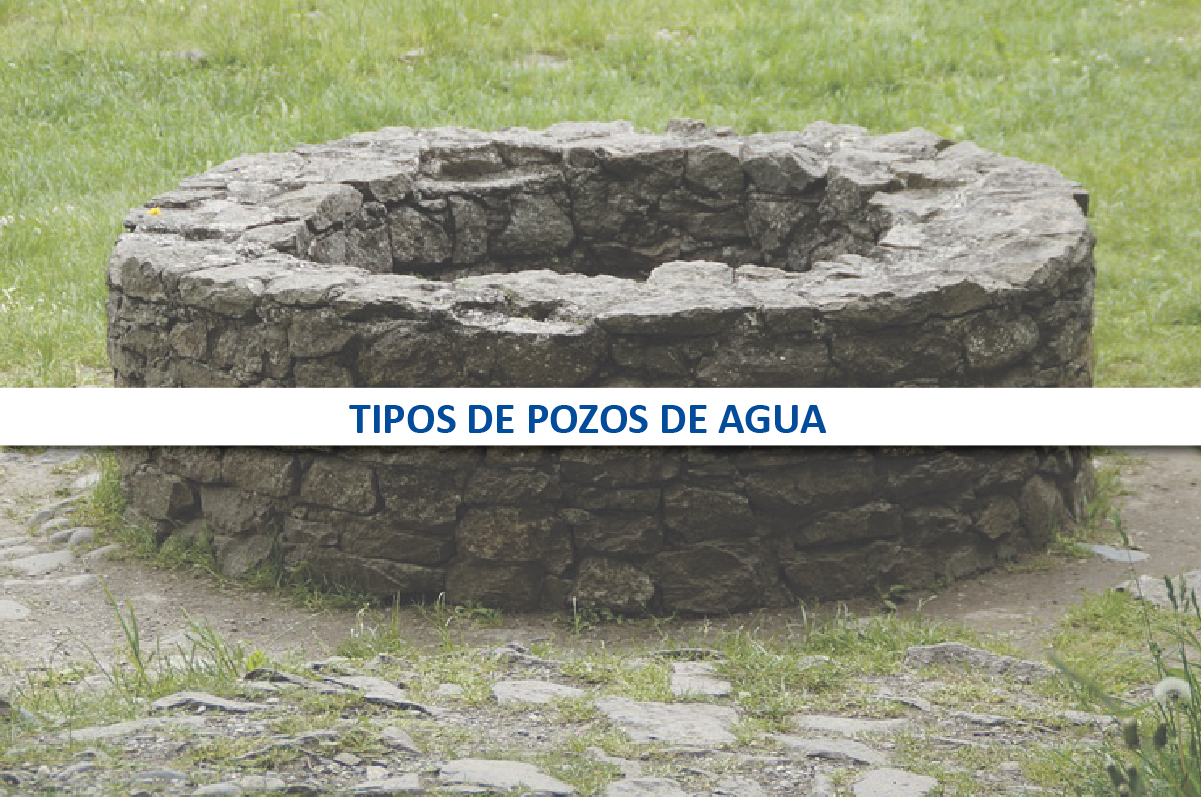Generally, perhaps many people are not aware of the different types of wells that exist, their differences and their applications. Usually the most common classification that is usually done is to differentiate: probes and open wells, but it is not as simple as that, but there are more modalities.
Today we will expand all this information so that stakeholders, especially at a particular level know what types of wells there are in case you need to be built one and be able to know which one is best suited to your needs, to your pocket and depending on any other variable.
First, we need to put ourselves in context and answer the most important questions in this post:
What is a well of water? What is it?
Technically, a water well is a vertical uptake drill in order to exploit the groundwater containing a subsurface rock in its interstitials or fissures, in what is called an aquifer. To move the water to the ground level is done by means of a bucket or any other vessel, to do it manually, and but through a pump, which can be motorized or also act manually.
When a well is made, water can be found that needs or does not be treated before consuming, and that must be controlled its quality very often since the work is carried out and throughout the life of the well.
Why are wells built?
We all know that water makes up a large part of planet Earth, but almost 97% of this water is salty and only 3.4% is sweet. So by building wells we find an effective method for obtaining fresh water and in addition to good quality, since it has not been exposed to contamination.
The first step before choosing which well is to be made, it is vital to know the depth of the water layer, the state and composition of the land on which we are going to act, how quickly it has to be built and the budget for the work.
3 types of water wells:
Deepened wells:
Also called wells with drainage drilling. The deepened wells are built by deformation. Through a vertical movement of a perforated tube and small diameter and with a pointed end. It takes place on terrain such as sand or gravel. This technique allows the extraction of water that is between 15 and 100 m maximum depth. Water in such wells will be exposed to possible contamination and even drying, although not largely.
Drilling such wells can be done in 3 different ways:
- Beating: A tube is nailed that drops one end regularly with a heavy element.
- Water injection drilling: pressure water is injected into the inside of a tube. This technique greatly benefits the ease of excavation and also the subsequent evacuation of the debris.
- Drilling by brushing: using the tubing itself as a base, the soil is excavated upright.
Dug wells:
It is the simplest and most conventional technique, and at the same time the least expensive. To perform this technique the soil on which the drilling is performed has to be quite soft and that the water table is not too deep. For the construction of these wells it is advisable to incubate them, that is, keep them in vertical mode with concrete rings, but in many other cases it is reinforced by stones. In both cases, the goal is to reinforce the well and prevent possible collapses.
In most cases it is done manually(peak and shovel), except for some mechanisms to reduce physical stresses, for example: using an excavator or using a auger.
In relation to this fact the result are not very deep wells, between 10.20 or 30m maximum,according to the technique used. Based on this, the water in these wells will be highly exposed to contamination and drying.
Rated wells or drills:
The vast majority of modern well construction has been through this technique, as it allows to make wells up to 300m deep.
Rated wells can be built through 3 different techniques:
- Light motorizations: Using pumps or compressors, the ground is dug by hammering at the bottom of the hole or by making rotary drilling.
- Manual: they involve low costs. Drilling with a mad mill, perforation by percussion,perforation by injection or water release And perforation by removing sludge.
- Heavy mechanisms: this technique allows to obtain wells with great depths. These mechanisms perform drilling rotating that break the rocks. These perforations can reach hundreds of meters deep. In most cases, place a pump at the bottom to pump the water to the surface.
